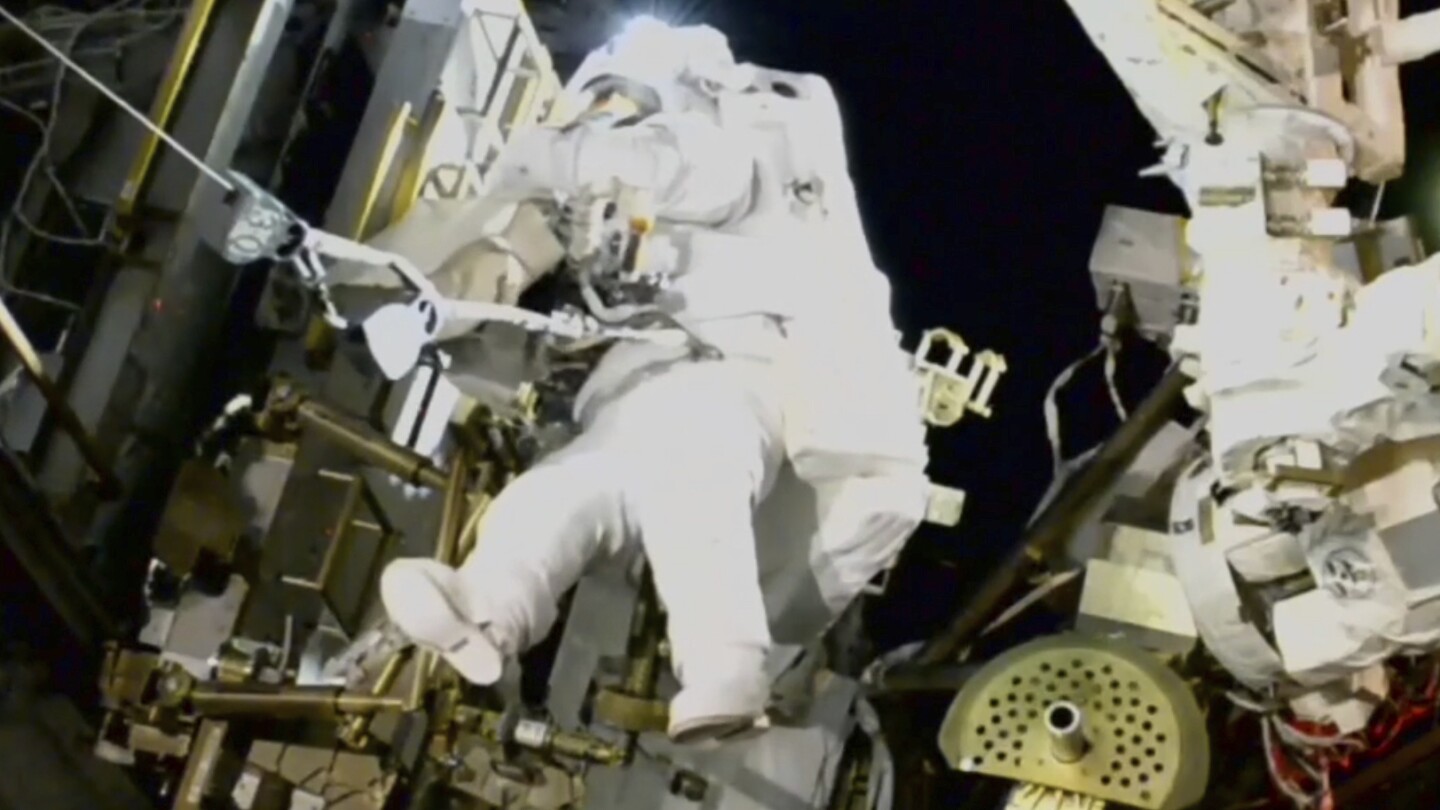Science
NASA’s stuck astronaut steps out on a spacewalk after 7 months in orbit

1. A New Perspective: Suni Williams’ First Spacewalk
On a day filled with anticipation, NASA astronaut Suni Williams embarked on her first spacewalk since arriving at the International Space Station (ISS) over seven months ago. The ISS, a marvel of human engineering, orbited above Turkmenistan at an altitude of 420 kilometers, offering a breathtaking view of Earth. Williams, along with fellow astronaut Nick Hague, undertook crucial repair work, reviving a sense of normalcy after a period of challenges. For Williams, this spacewalk was a welcome change of scenery, a moment to step out of the confined living quarters and into the vastness of space, where the curvature of Earth serves as a poignant reminder of humanity’s place in the universe.
2. Overcoming Challenges: The Delayed Return
The extended stay of Williams and her crewmate, Butch Wilmore, aboard the ISS is a testament to the unpredictable nature of space exploration. Their original mission, launched aboard Boeing’s Starliner in June, was intended to be a brief test flight. However, technical issues with the spacecraft led to an extended stay, compounded by delays from SpaceX in launching replacement crews. The result is a prolonged mission, now expected to conclude in late March or early April—nearly ten months after their initial launch. This delay underscores the complexities and risks inherent in space travel, where even slight setbacks can have significant repercussions.
3. A Prior Setback Overcome
The spacewalk marks a triumphant return to extravehicular activities for NASA, following an aborted mission last summer due to a critical incident. During that event, water infiltrated the cooling system of an astronaut’s suit, posing serious safety risks. NASA meticulously investigated and resolved the issue, ensuring the safety of future spacewalks. This incident highlights the meticulous attention to detail required in space operations, where even minor malfunctions can escalate quickly. The successful execution of Williams and Hague’s spacewalk is a testament to the rigorous safety protocols and technological prowess of NASA’s team.
4. Suni Williams: A Veteran of the Stars
As the ISS commander, Suni Williams brings a wealth of experience to her role, having previously lived and worked aboard the station. Her eighth spacewalk demonstrates her expertise and adaptability in the challenging environment of space. Williams’ proficiency was evident as she inspected the SpaceX capsule that will eventually return her to Earth, navigating a minor hiccup with determination and skill. Her ability to remain focused under pressure is a hallmark of her distinguished career, reflecting the dedication and resilience required of astronauts.
5. Broad Implications for Future Missions
The延迟 in Williams and Wilmore’s return highlights the intricate dance between space agencies and private companies in modern space exploration. As NASA relies increasingly on commercial partners like Boeing and SpaceX, the interconnectedness of schedules and the impact of delays become more pronounced. This situation underscores the need for robust contingency planning and the importance of collaboration in advancing space travel. The experience serves as a valuable lesson in the challenges of coordinating complex missions, offering insights that will shape future endeavors.
6. Support and Journalism in Space Exploration
The Associated Press’ coverage of this mission is supported by the Howard Hughes Medical Institute and the Robert Wood Johnson Foundation, emphasizing the critical role of independent journalism in scientific reporting. Such support ensures that the public remains informed about the triumphs and tribulations of space exploration, fostering a deeper understanding and appreciation of the field. In an era where science and technology are advancing rapidly, the role of the press in conveying these developments is vital, bridging the gap between the scientific community and the public.
-

 Money3 days ago
Money3 days agoConsumer Financial Protection Bureau Adds Error Message To Home Page
-

 Australia23 hours ago
Australia23 hours agoTropical Cyclone Zelia intensifies to category 2 storm
-

 Money2 days ago
Money2 days agoWinning Content Strategies For Wealth Managers
-

 Asia24 hours ago
Asia24 hours agoWhat you need to know about 2024 YR4, the asteroid that could hit Earth in about eight years’ time
-

 Entertainment16 hours ago
Entertainment16 hours agoPrince Harry and Meghan Markle’s Best Moments and Photos From the 2025 Invictus Games
-

 Australia10 hours ago
Australia10 hours agoTropical Cyclone Zelia intensifies to category five system off Pilbara coast
-

 Politics1 day ago
Politics1 day agoDozens of religious groups sue to stop Trump admin from arresting migrants in places of worship
-

 Entertainment3 days ago
Entertainment3 days agoEvery Celebrity Who Attended the 2025 Super Bowl: A Guide to the A-Listers at the Big Game








